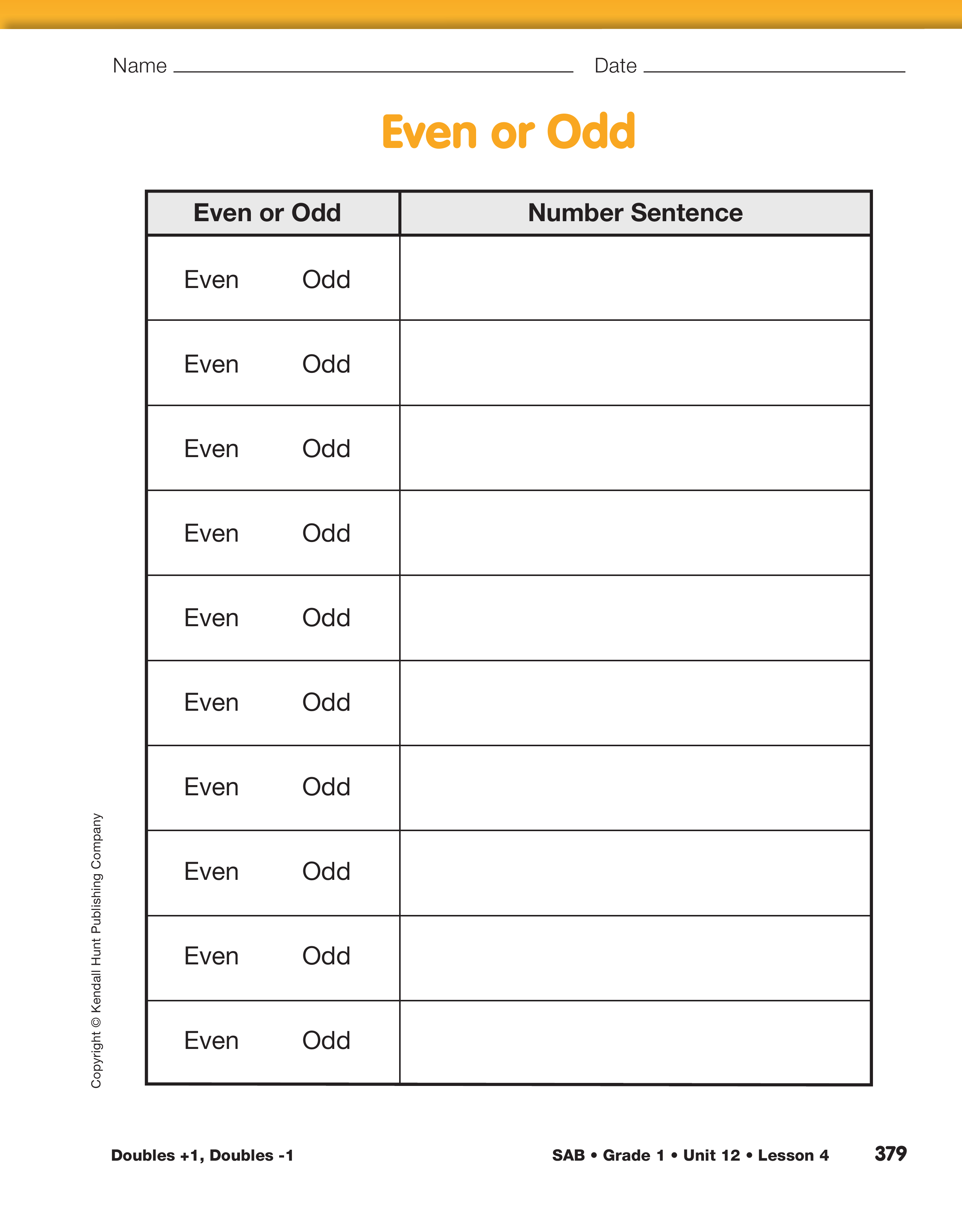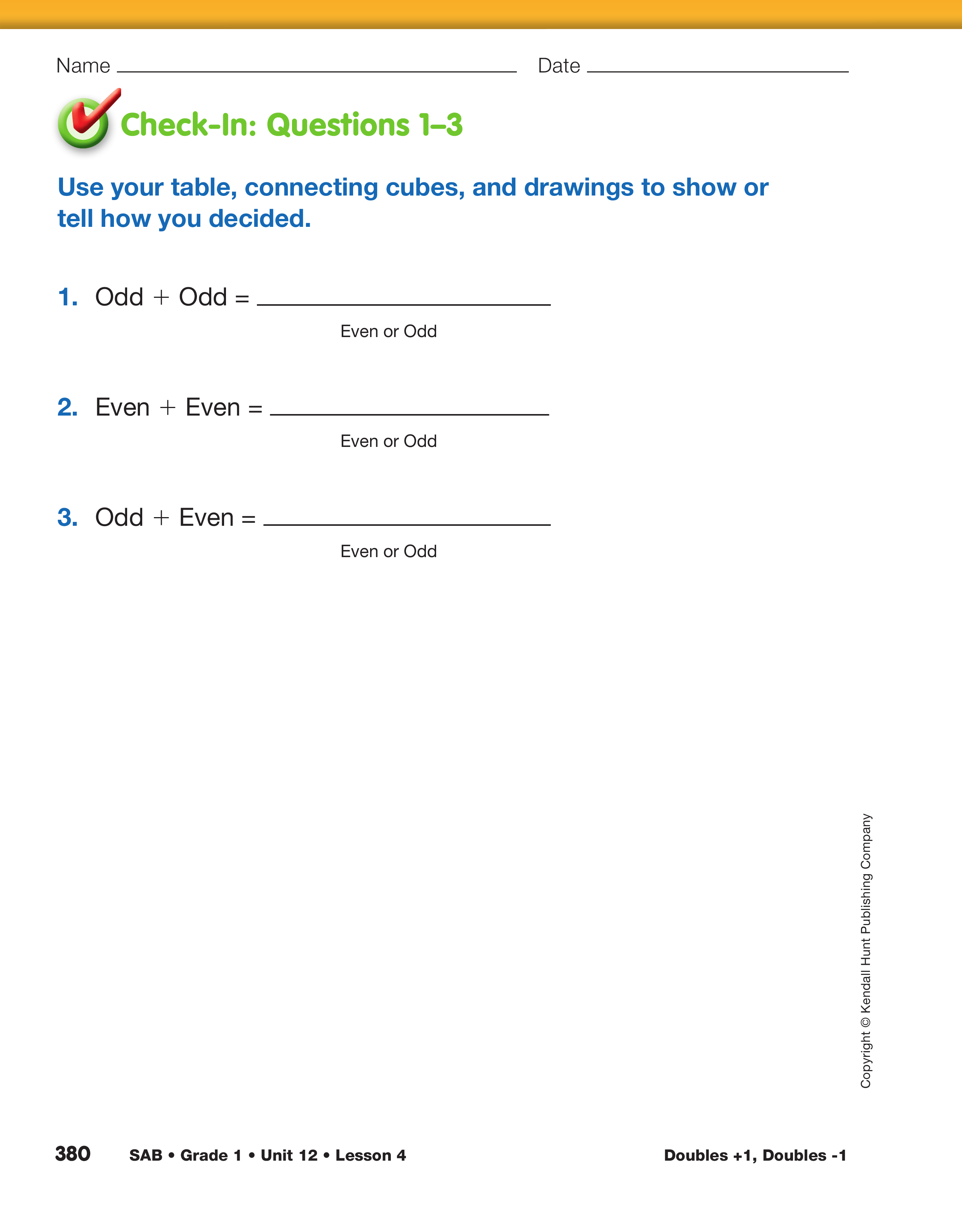Doubles +1, Doubles −1
Est. Class Sessions: 1–2Summarizing the Lesson
Write the following on the display or board:
Doubles
Doubles +1
Doubles −1
Odd + Odd
Even + Even
Even + Odd
Ask students if they can predict whether the sum described in each statement will be even or odd.
Ask:
Tell students that they are going to investigate to see if this pattern is true for numbers that are not doubles or near doubles. Display and ask students to remove the first Even or Odd page from the Student Activity Book. Ask students to locate their spinners from the Doubles, Doubles +1, Doubles −1 pages and distribute one set of the Number Cards 1–10 you prepared to each student pair.
Explain that one person in each pair will spin the number spinner to find the first number in an addition number sentence; for example, nine. The second person in the pair will draw a number card to find the second number in the number sentence; for example, three. The pair will then predict if the sum of 9 + 3 will be even or odd and circle their prediction in the table on the Even or Odd page in the Student Activity Book. After making a prediction, they record the number sentence and sum to check their work. Ask a volunteer to play one or two rounds with you to demonstrate how to choose the numbers and fill in the table.
After students work with their partner to fill in several rows on the table, ask:
This is a challenging discussion and it is not necessary for all students to come to these conclusions at this time.
Ask students to summarize their thinking by completing Check-In: Questions 1–3 on the Even or Odd pages.















